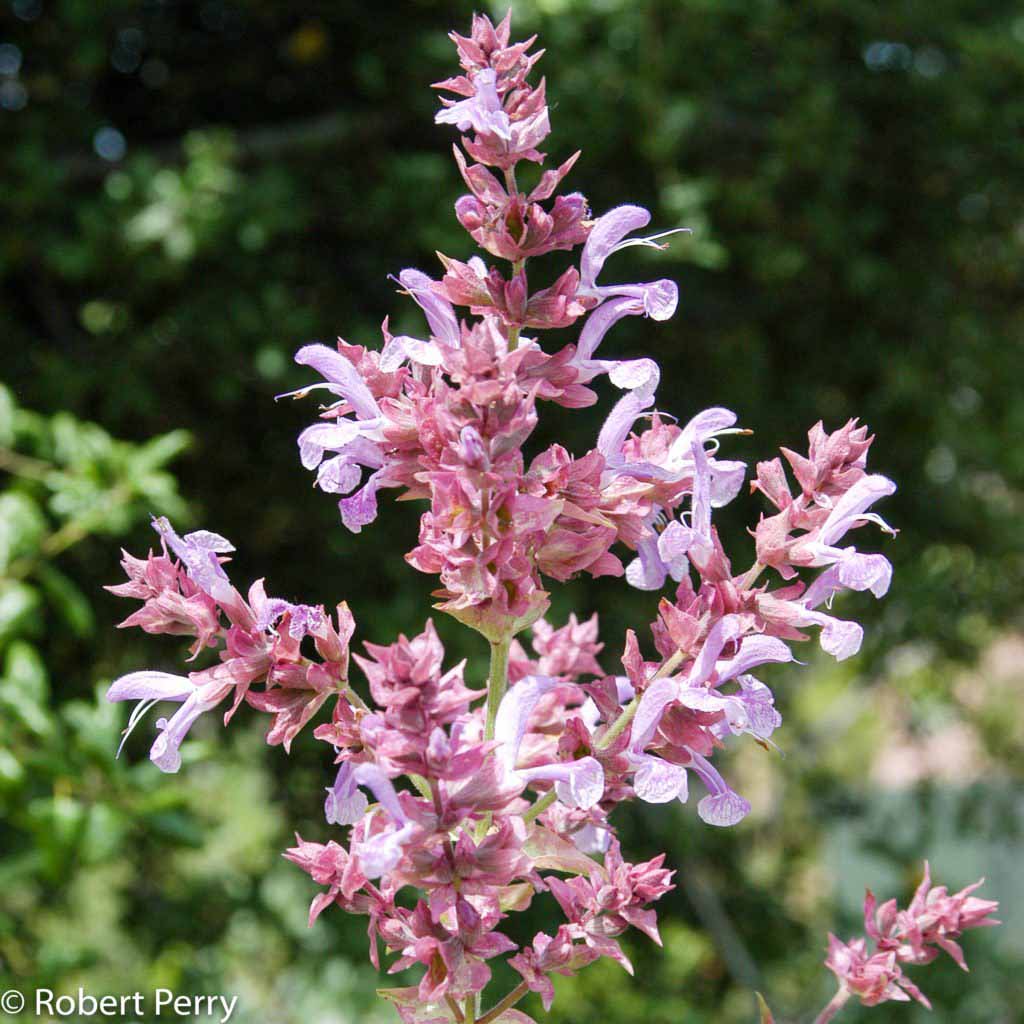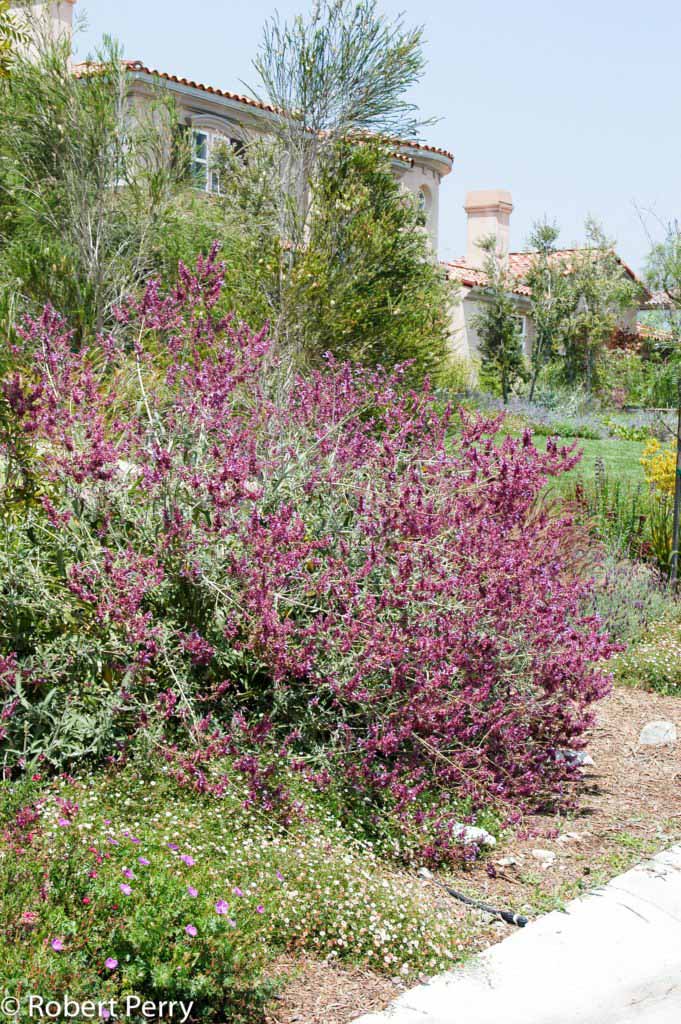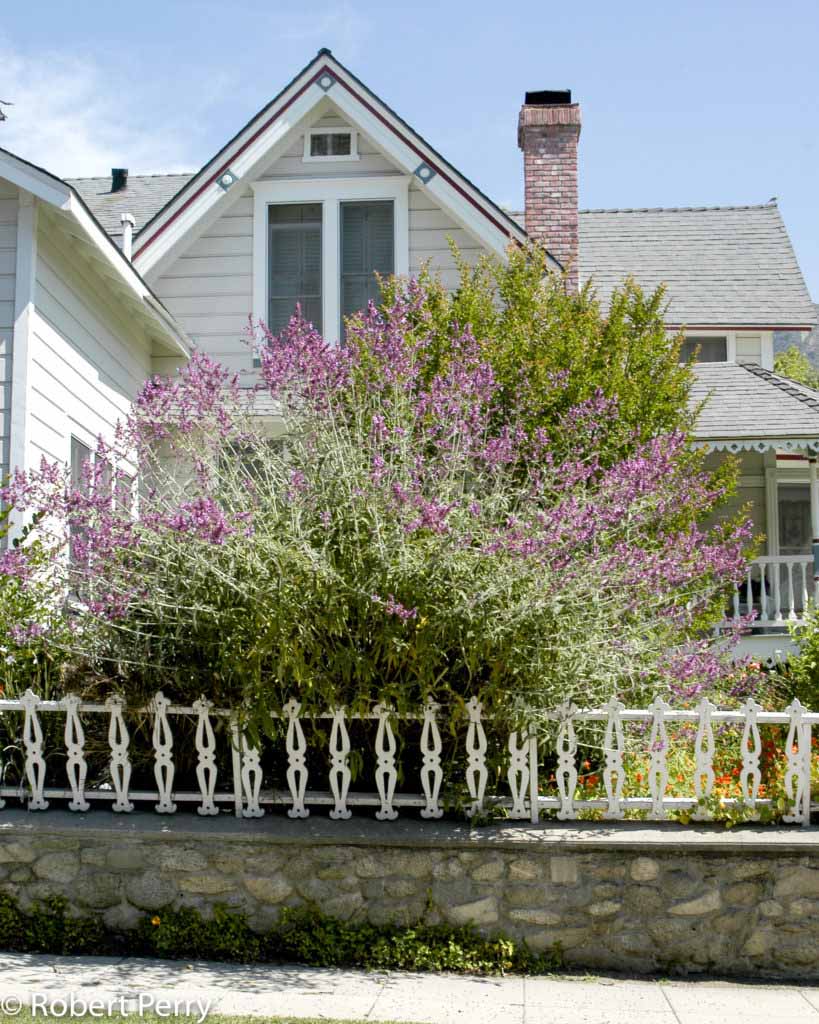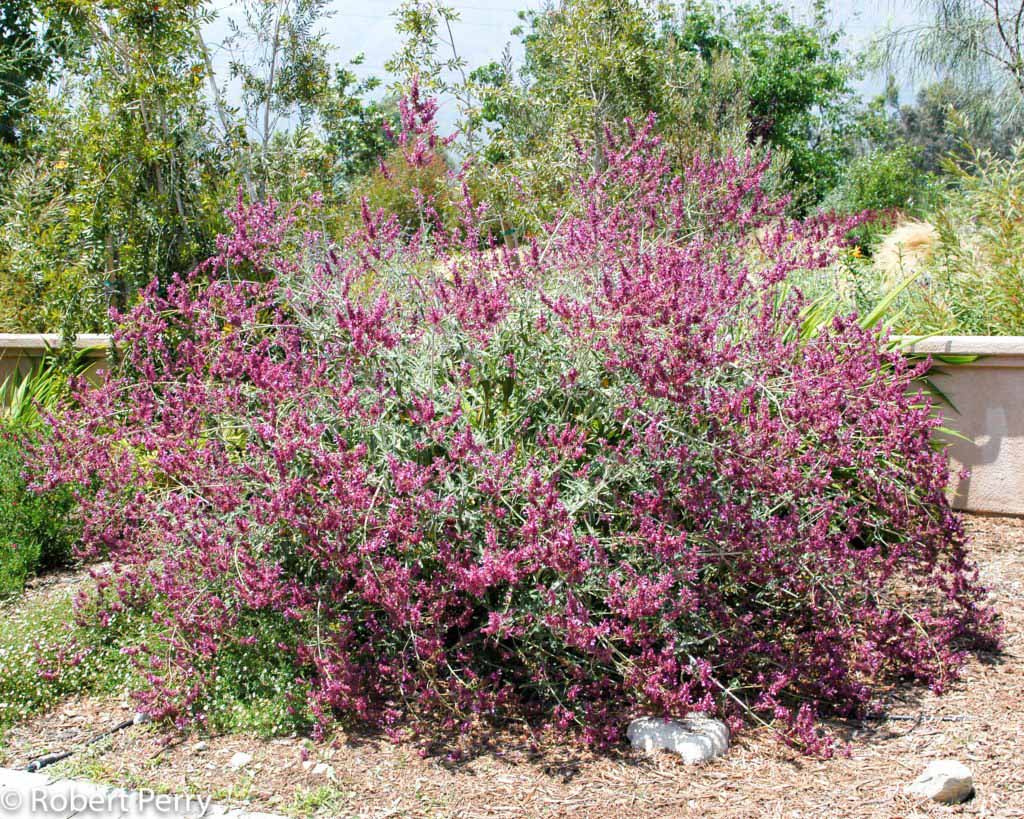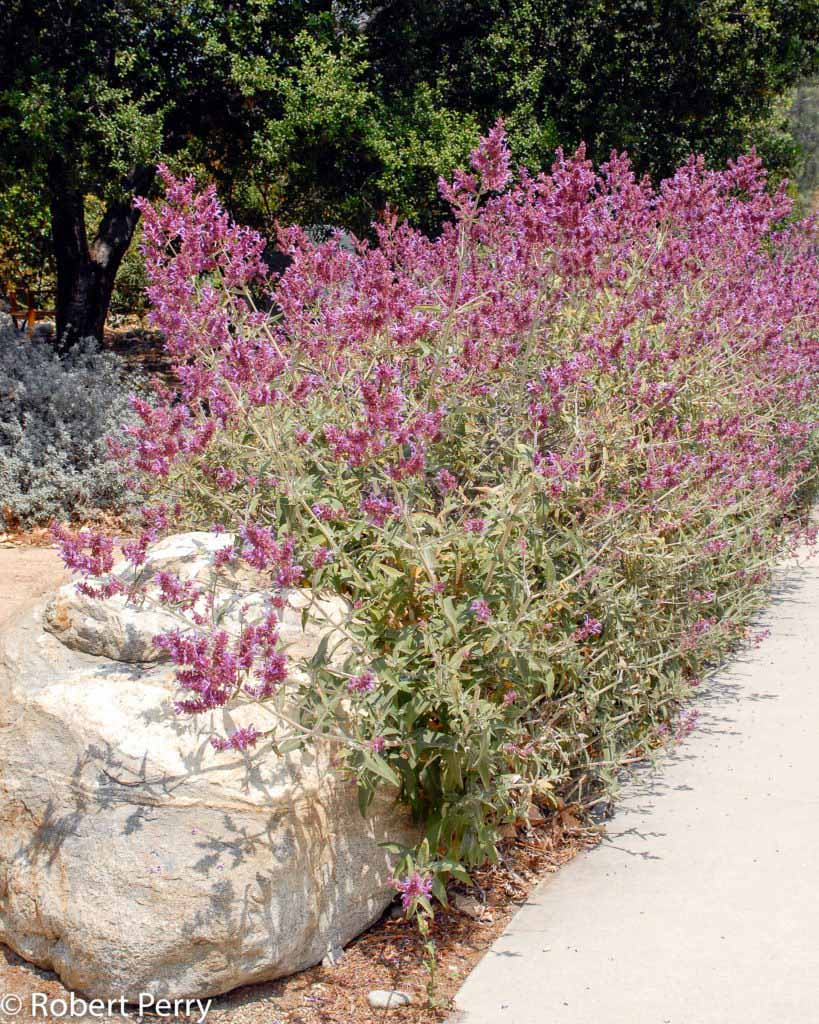Please note:
For most situations, we would not recommend installing this plant in new gardens, landscapes, or plantings in southern California.
This plant is sometimes found in local nurseries, but there are so many other beautiful sages available that are native to California, generally longer lived, and likely more beneficial to native songbirds and pollinators. Some of our top choices for other sages include white sage, Allen Chickering sage, Pozo Blue sage, Mrs. Beard sage, and Santa Rosa Island sage.
This plant profile is included in this site as a reference for two primary reasons:
- If you already have this plant in your landscape, this information can be used to know how to care for it.
- If you already have this plant in your landscape, you can use this information to learn which of our recommended plants have the same recommended watering needs, making them potential choices for grouping together if you will be adding new plants to the existing area.
In general, instead of this plant, we recommend planting appropriate California native plants whenever possible.
In addition to their beauty, California native plants offer the most additional benefits beyond just low water use, including habitat for the birds, butterflies, and pollinators who evolved here with them. This adds value and beauty in your landscape beyond just a pretty plant, allowing the landscape to actively contribute to the environment instead of just using less water. You can find our top recommended native plant choices on our Plant Finder by selecting “California Native” and learn more about California native plants here.
To learn what exactly California native plants are and how they are different from other low water plants, visit this link.
For visual interest or other reasons, some people may also want to mix in other non-native low-water demanding plant choices even though they do not have the same ecological value as native plants. For that reason, we feature a number of non-native waterwise selections on this site as well. However, we see native plants as the best “go to” for most landscape or garden choices! We encourage people to consider planting at least 50% of their landscape to native plants. See our Garden Designs section or visit our Waterwise Demonstration Garden in Montclair for plenty of inspiration.
————————————————————————————————————————————————
The Canary Island sage is large and robust mounding shrub that quickly reaches 5-8 ft. tall and up to 10 ft. wide. Distinctive arrowhead shape leaves are pale green; dense hairs occur on the underside of leaves and on stems. Colorful purple flowers and deep magenta calyces develop on tall panicles for a bold display in early to mid spring.
Canary Island sage is both a large and colorful plant. This is a fast growing and short-lived species, that is best suited to background and border areas and as a temporary color accent plant as other parts of the garden mature. Plant in full sun with ample room and in well-drained soils low to very low amounts of water. Heavy pruning is needed to help maintain smaller sizes. However, avoid contact with hairs on leaves and stems. It is hardy to 20°F.
